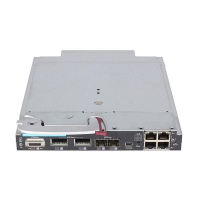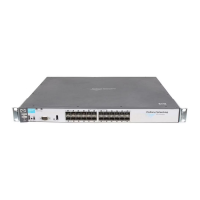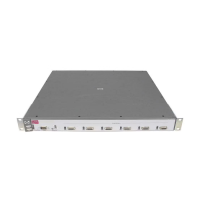134
By controlling the maximum number of (S, G) entries in a join/prune message, you can effectively reduce
the number of (S, G) entries sent per unit of time.
IMPORTANT:
If PIM snooping–enabled switches are deployed in the PIM network, be sure to set a value no
reater than
the path MTU for the maximum size of each join/prune message on the receiver-side edge PIM devices
To configure join/prune message sizes:
Ste
Command Remarks
1. Enter system view.
system-view N/A
2. Enter PIM view.
pim N/A
3. Configure the maximum size
of each join/prune message.
jp-pkt-size packet-size
Optional.
8100 bytes by default.
4. Configure the maximum
number of (S, G) entries in a
join/prune message.
jp-queue-size queue-size
Optional.
1020 by default.
Setting the DSCP value for PIM messages
IPv4 uses an eight-bit ToS field to identify type of service for IP packets. As defined in RFC 24724, the first
six bits contains the DSCP priority for prioritizing traffic in the network and the last two bits are reserved.
To set the DSCP value for PIM messages:
Ste
Remarks
1. Enter system view.
system-view N/A
2. Enter PIM view.
pim N/A
3. Set the DSCP value for PIM
messages
dscp dscp-value
Optional.
By default, the DSCP value in PIM
messages is 48.
Displaying and maintaining PIM
Task Command Remarks
Display the BSR information in the
PIM-SM domain and locally
configured C-RP information in
effect.
display pim bsr-info [ | { begin |
exclude | include }
regular-expression ]
Available in any view
Display the information of unicast
routes used by PIM.
display pim claimed-route
[ source-address ] [ | { begin |
exclude | include }
regular-expression ]
Available in any view

